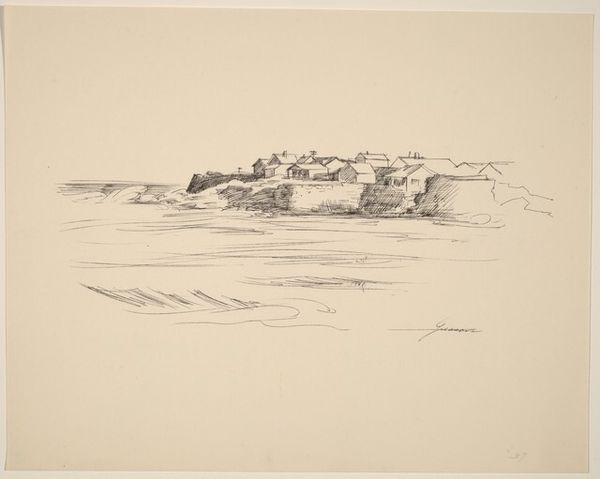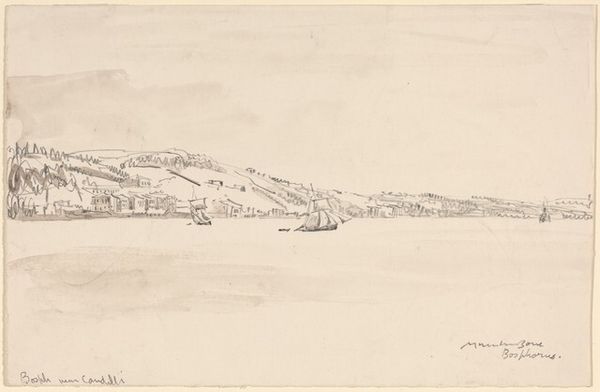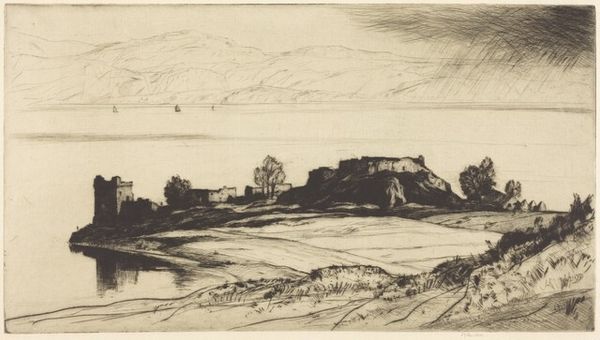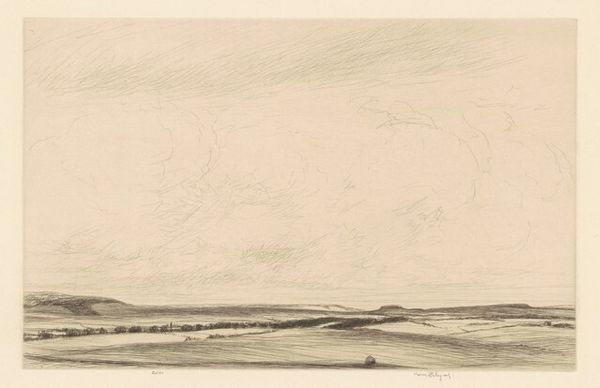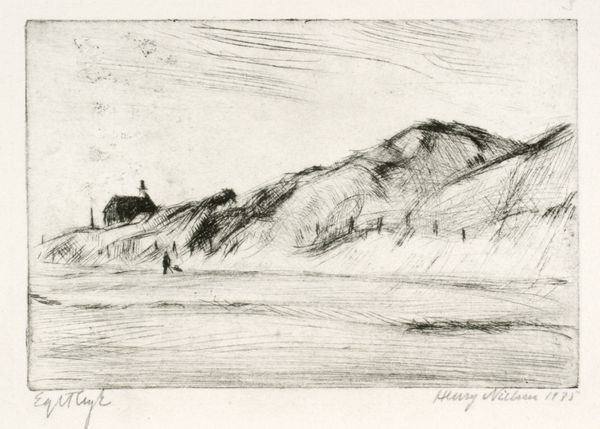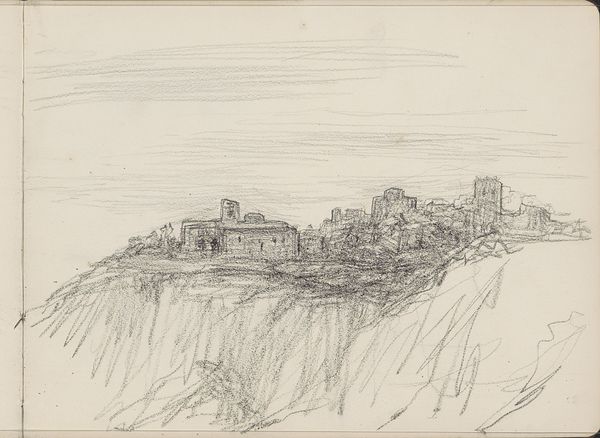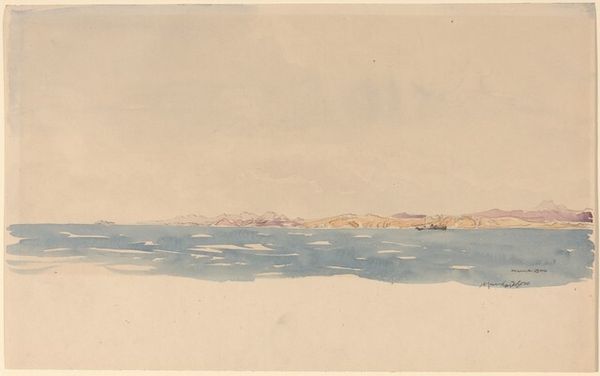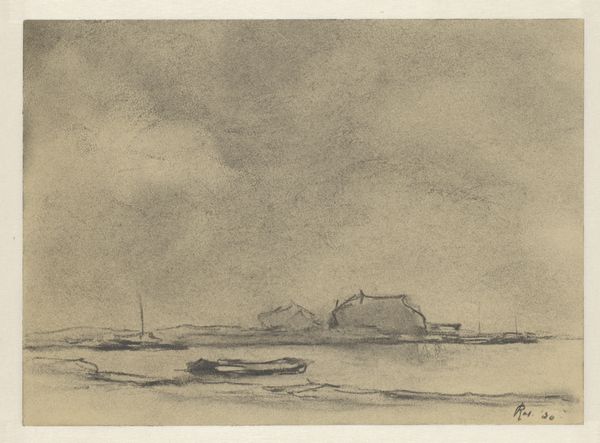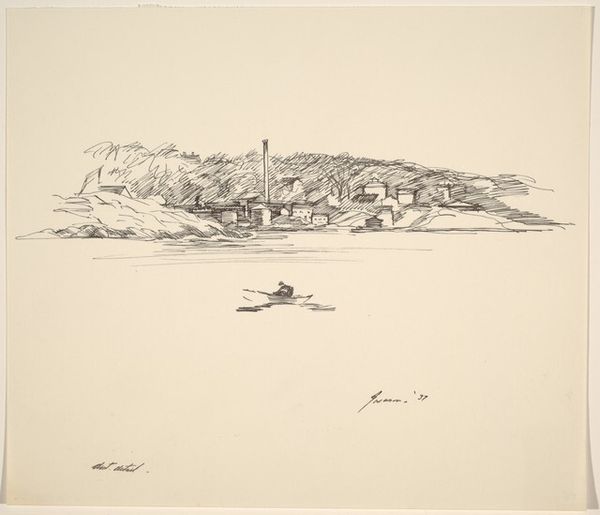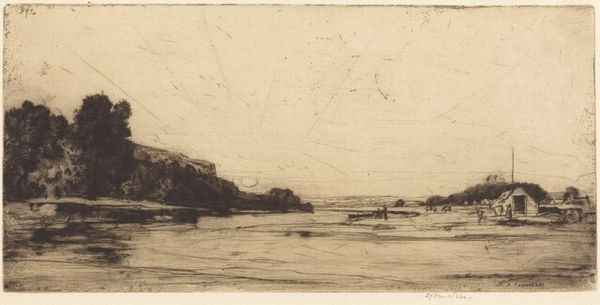
drawing, print, etching, graphite
#
pencil drawn
#
drawing
# print
#
etching
#
pencil sketch
#
landscape
#
charcoal drawing
#
pencil drawing
#
graphite
#
cityscape
Copyright: National Gallery of Art: CC0 1.0
Curator: It’s remarkable to consider the production of Kerr Eby's etching, "Porthleven," created in 1925. What's your first impression? Editor: Well, the linework gives it such a fragile quality. It depicts a town perched on a cliffside, almost blending into the rugged landscape. It makes me wonder, how did Eby achieve this effect using printmaking? Curator: A close look at the etching reveals a detailed manipulation of the copper plate. The varying depths of the etched lines show he was carefully modulating tone and texture. Notice how the lines depicting the waves are fainter, whereas the density of the dark, hatched lines communicate the sheer weight and texture of the stone. But what do you think the print's intended market and mode of distribution might reveal about its meaning? Editor: It makes me think about access. Prints made art accessible to a wider audience than unique paintings would. But were there specific communities or consumers targeted here? Curator: Exactly! And let's consider what this specific scene, a coastal village, might represent to those consumers. It evokes ideas about place and community. Did this play a role in its value as a commodity? I mean, what labor went into constructing that stone building in the landscape? What was the status of the workers in the economic ladder of Porthleven at that time? What was the cost to the buyer? Was there pleasure to be had, contemplating those facts while purchasing it, taking it home, displaying it? Editor: So, you are saying this is less about romanticizing the place itself, and more about questioning who benefits from its image as it is consumed? Curator: Precisely. The etching embodies how landscapes become commodified, and prompts us to think about the complex relationships between materials, labor, and consumption. Editor: I never thought about landscape art in this light, but it opens up a lot of questions. It's so easy to enjoy the view, but it becomes even richer when we think about its economic history. Curator: Indeed! Understanding the artwork means analyzing both its materiality and social significance as an object of labor.
Comments
No comments
Be the first to comment and join the conversation on the ultimate creative platform.
